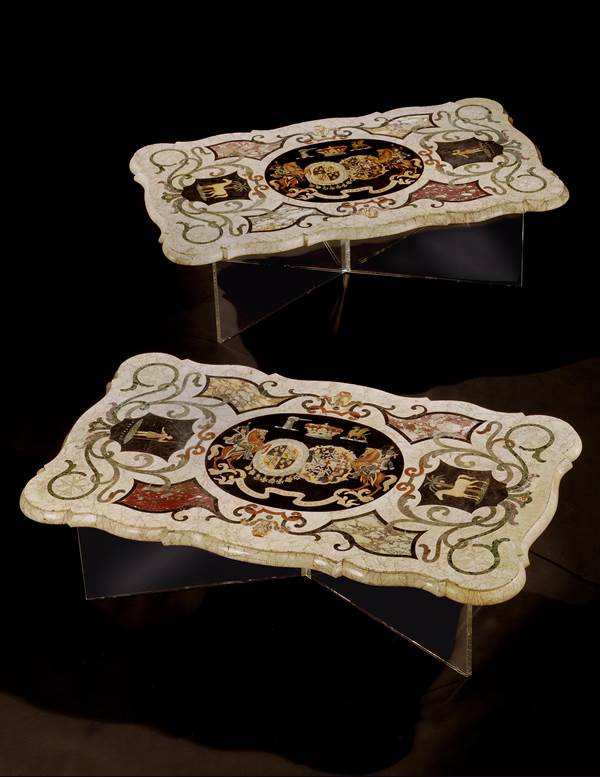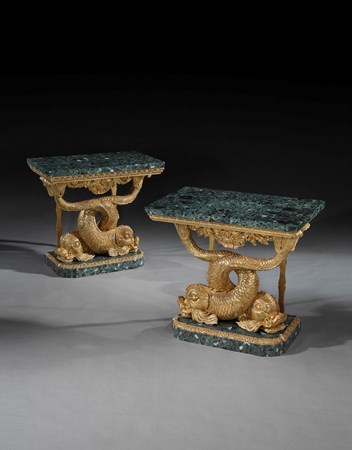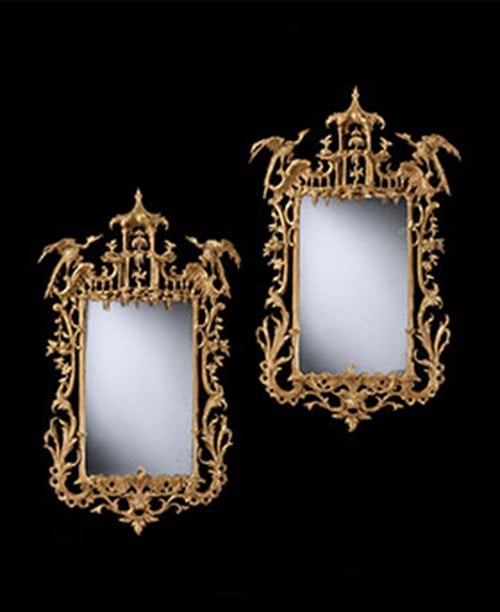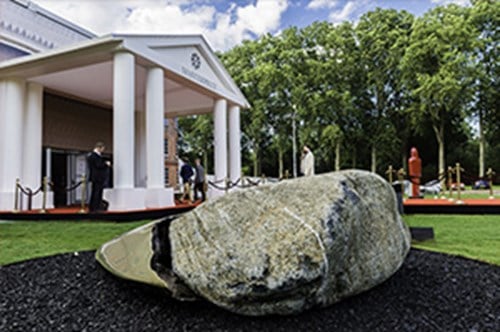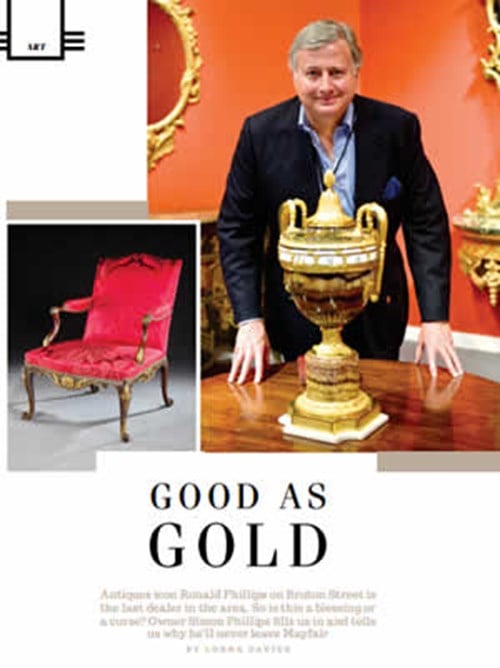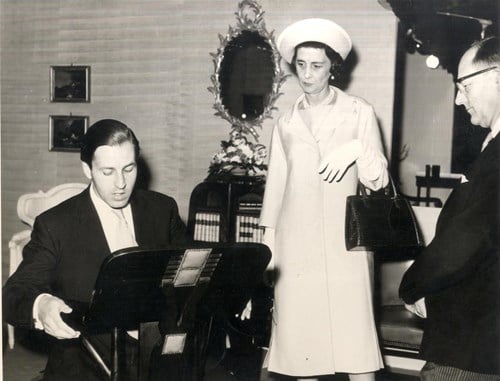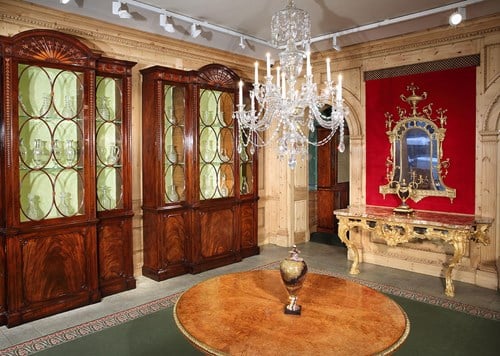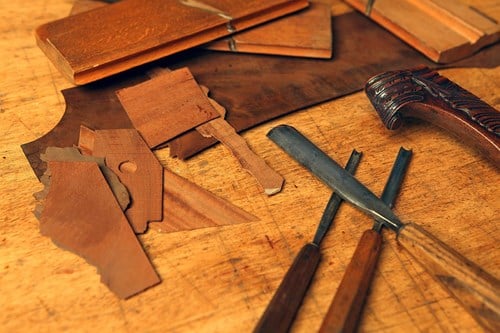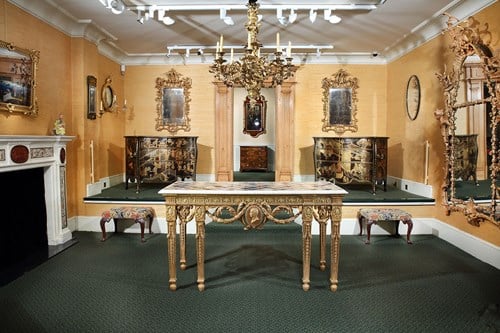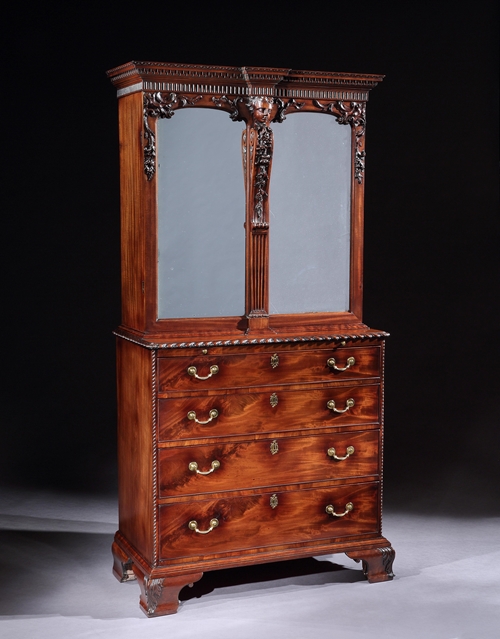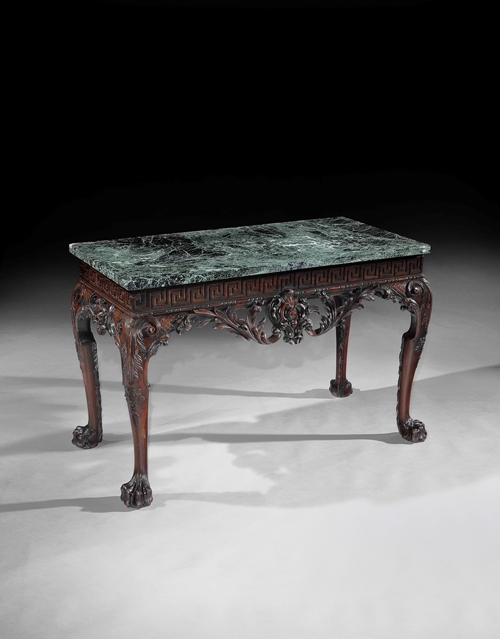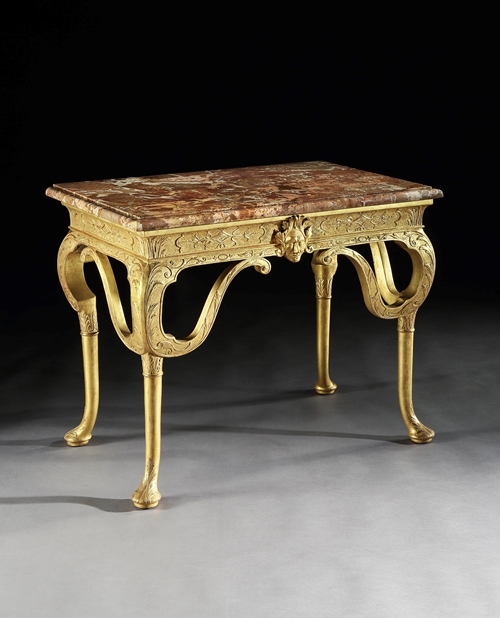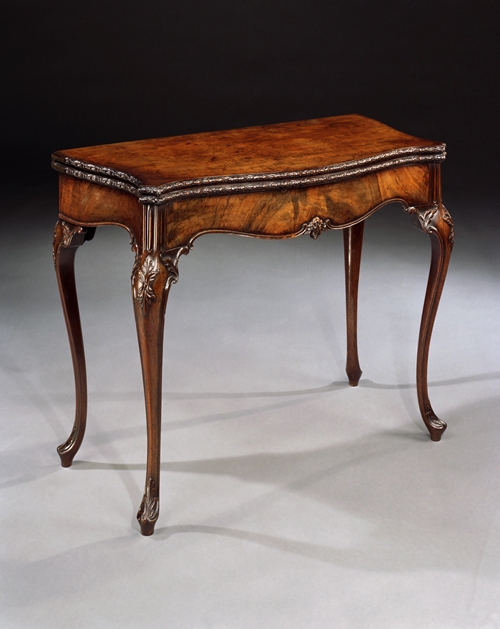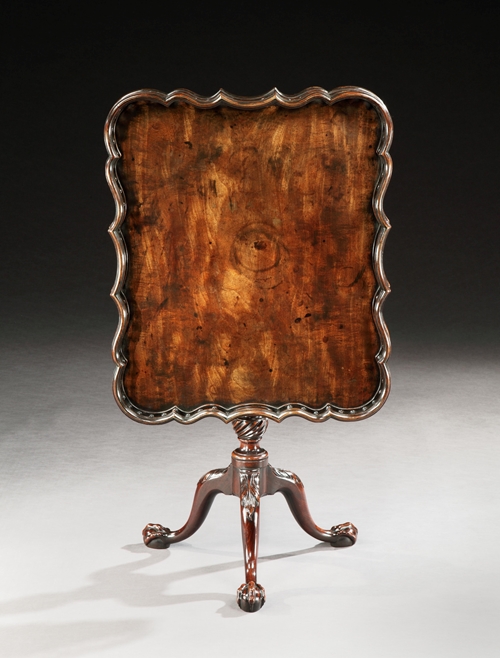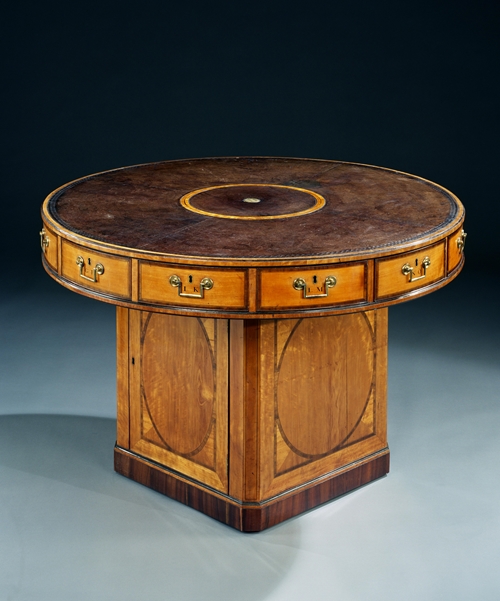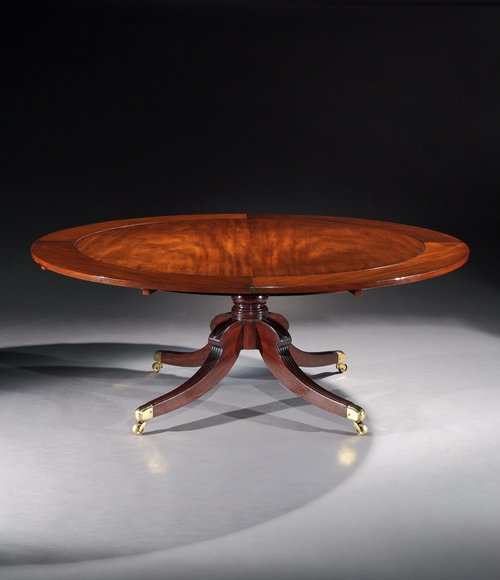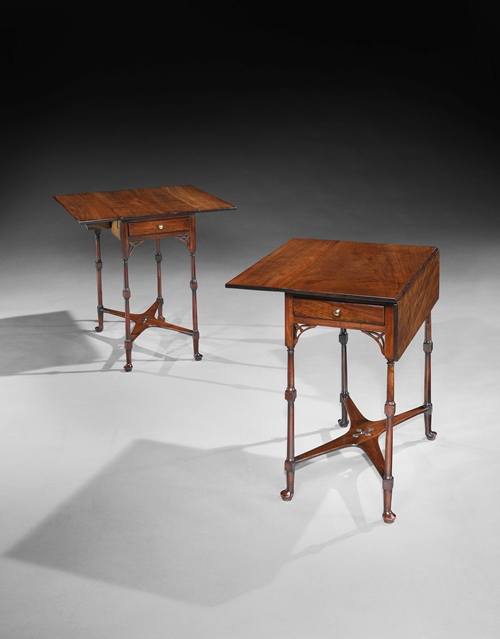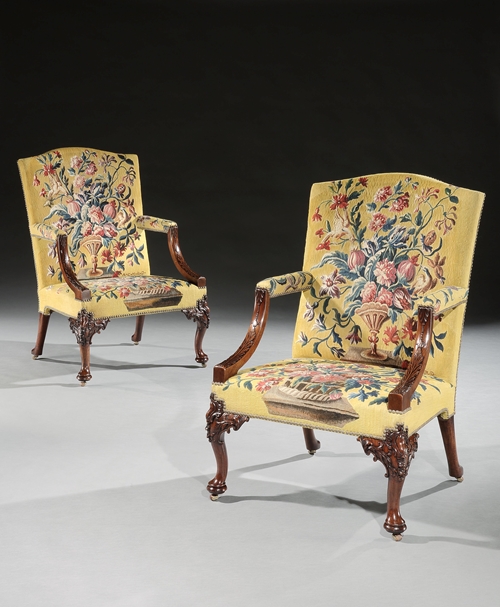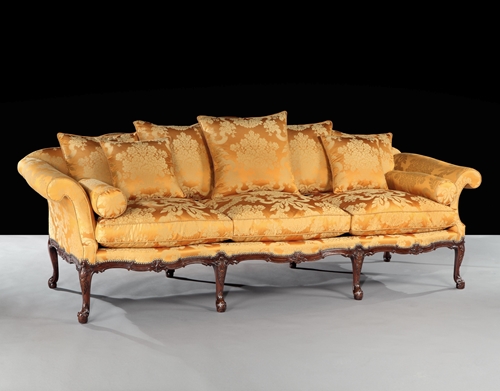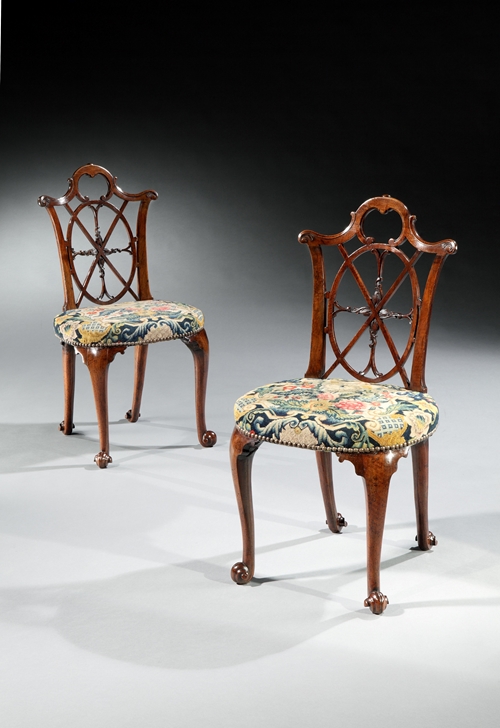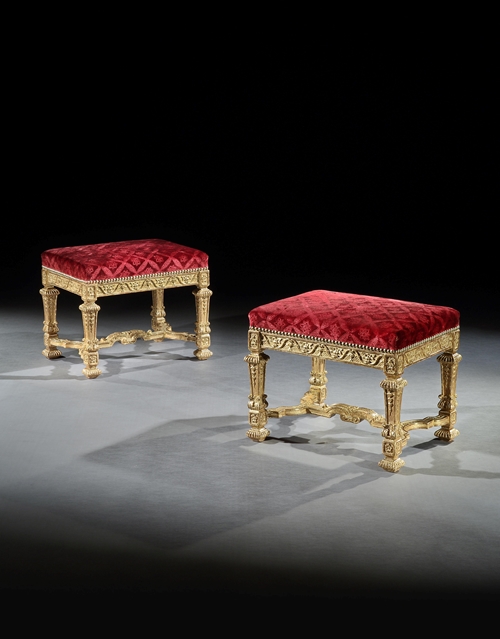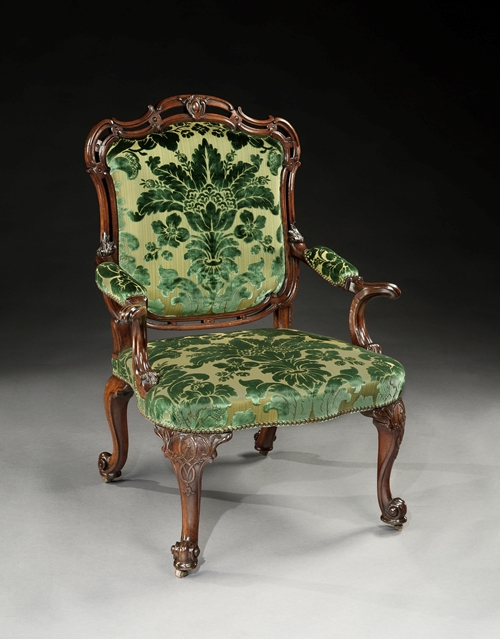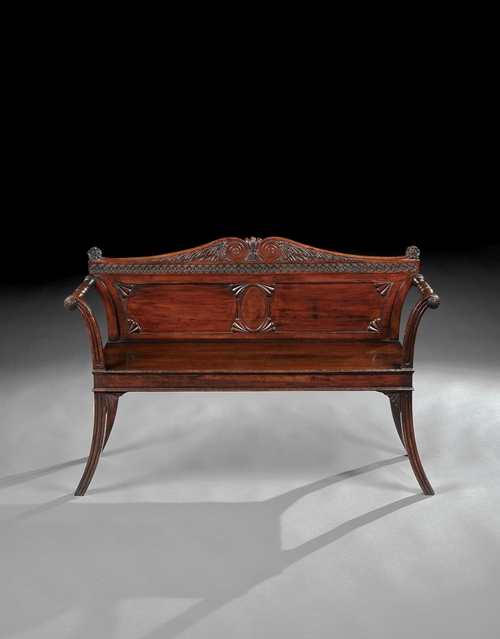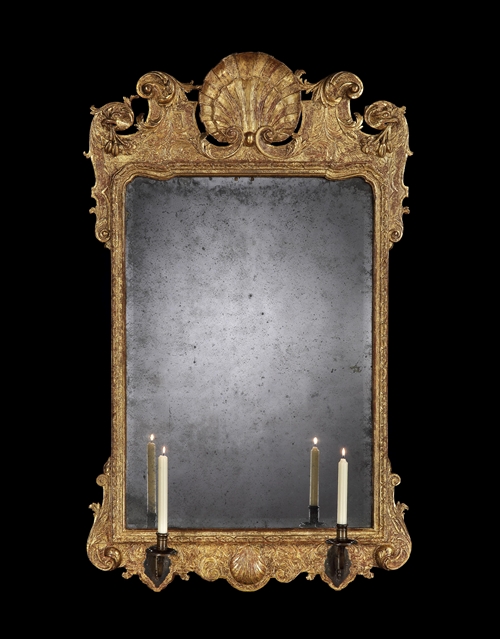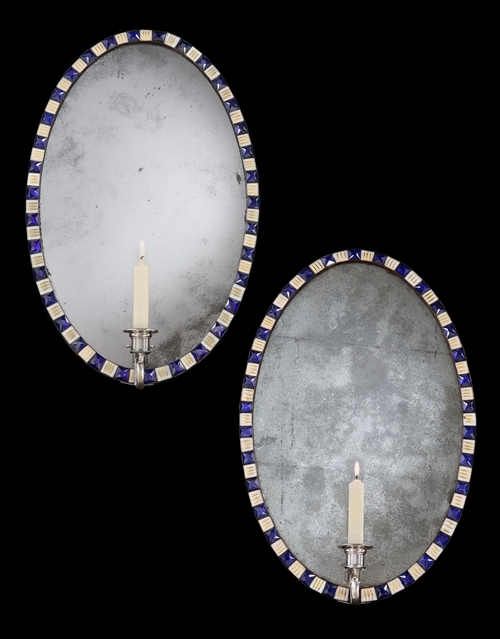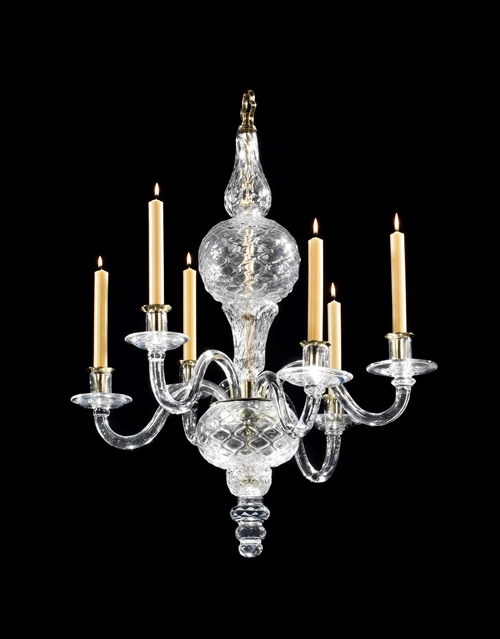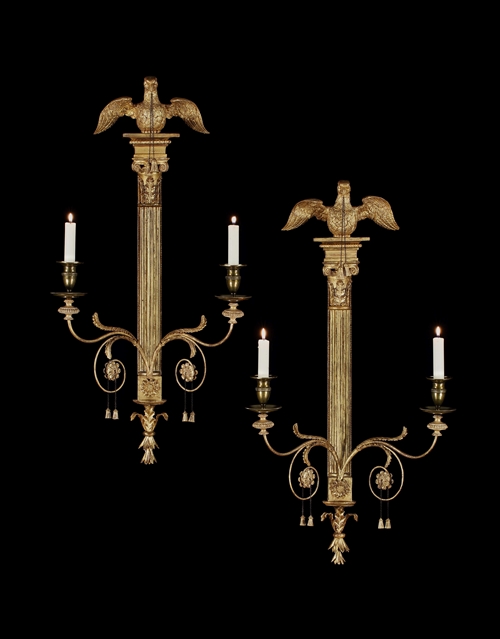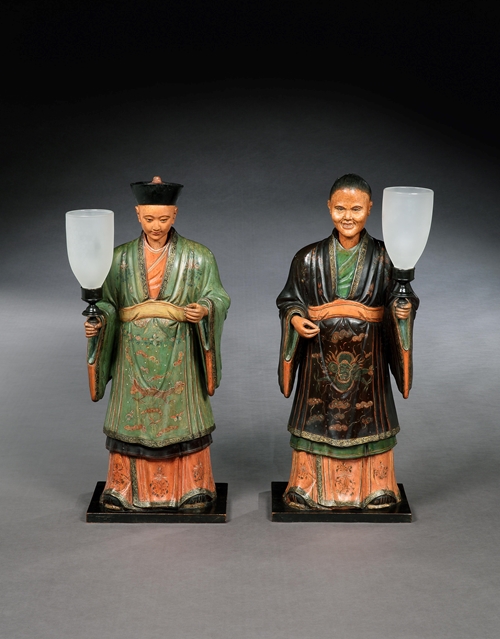A spectacular pair of early 19th century Maltese specimen marble tops, each of rectangular form with serpentine edges, inlaid with numerous marbles including brêche médici, brêche violette and verte patricia, each top cantered by an oval, richly inlaid with ornate twin conjoined coats of arms, flanked by bearers of rearing mounted horses, surmounted by a marquess' coronet, flanked by two crests with a ribbon below inscribed 'METUENDA COROLLA DRACONIS' (fear the dragon's crest), with two cartouche to each side, one with a horse under a palm tree and the other with a young warrior above the inscription 'CARTHAGO', all surrounded by foliate scrolls, and asymmetric panel arabesques. Stamped 'J. Darmanin and Sons, Malta'.
These magnificent and richly inlaid marble tops were made for Charles William Stewart, 3rd Marquess of Londonderry, KG, GCB (1778-1854), whose arms they bear, together with those of his wife, Frances Vane-Tempest, all beautifully worked in inlaid marbles and semi-precious stones. Lord Charles Stewart was elevated to the peerage of the United Kingdom as Baron Stewart of Stewart's Court and Ballylawn, Co. Donegal, on 1 July 1814. His wife, whom he married on 3rd April 1819, was the daughter and heiress of the considerable fortune of Sir Henry Vane-Tempest, 2nd Baronet, of Wynyard and Long Newton, Co. Durham. It was this marriage that brought the vast Wynyard property to the Londonderrys.
Wynyard Park was built between 1820 and 1830 for the 3rd Marquess of Londonderry who was, as well as a successful general, was a famous coal magnate and founder of Seaham Harbour. Designed by Benjamin Wyatt (1775-1852) and completed by his brother Philip (d.1835), this country estate incorporated parts of an earlier 18th century building, while the Entrance Hall was partially inspired by Mount Stewart, the family's estate in Northern Ireland. This house remained in the Londonderry family until 1987 when it was sold to Sir John Hall. In his book The Buildings of England: County Durham, Nikolaus Pevsner calls Wynyard "the most splendid 19th century mansion in the county."
The Darmanin family of Malta who made these extraordinary tops owned a large marble works that was very active during the 19th and 20th centuries. They produced works of sculpture as well as ceremonial table tops in a sumptuous style. They were of sufficient note to be exhibitors representing Malta at the Great Exhibition of 1851, where they were listed as makers of 'mosaic tops'. They clearly impressed the judges and were awarded an 'Honourable Mention; in the 1851 Judges report for 'Excellence of workmanship'. The firm are more closely associated with the making of circular inlaid tops centred with a central round panel with borders inlaid with floral or shell designs. Examples of these may be seen in both the British Royal Collection and the Victoria and Albert Museum. This pair of tables, however, are to date the grandest and most ambitious examples of the firm's work and, due to the elaborate nature and strong combination of both the Londonderry coat of arms and such strong Maltese symbols, it is suggested that they may well have been presented to Lord Londonderry in recognition and thanks from Malta for his contribution as a key general serving under the Duke of Welllington's in his successful campaigns in the Peninsular War.
-
Provenance
Supplied to Charles William, 3rd Marquess of Londonderry (1778-1854), Wynyard Park, Co. Durham.
Thence by descent at Wynyard Park.
Looking for something similar? YOU MAY ALSO LIKE
YOU HAVE RECENTLY VIEWED ITEMS
- CAN WE HELP YOU?
- +44 (0)20 7493 2341
- [email protected]
